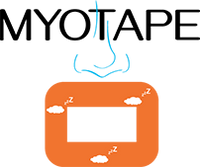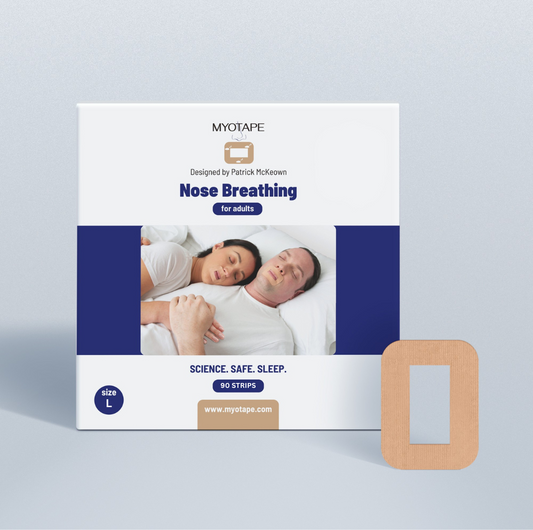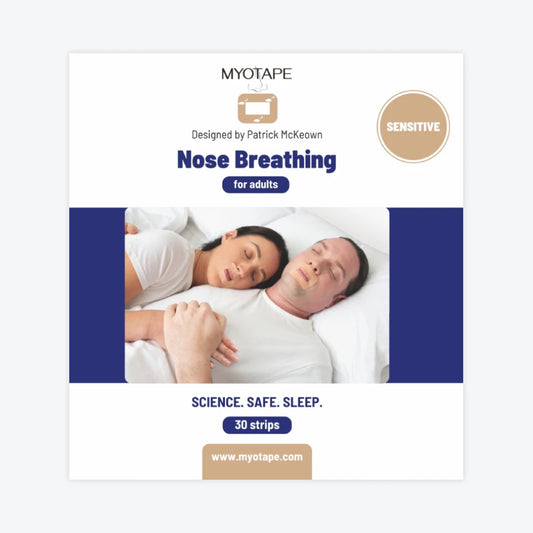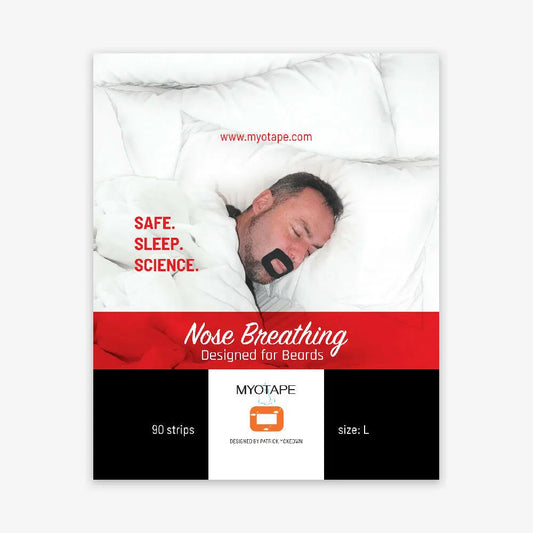If you're using CPAP for obstructive sleep apnea (OSA), you’ve probably focused on the usual suspects—mask type, pressure settings, and machine comfort. But here’s a critical question that’s often overlooked:
Are you breathing through your nose or your mouth during sleep?
This simple detail can determine whether your CPAP therapy is effective or frustrating. If you wake up tired, with a dry mouth or bloating, your breathing pattern could be the root cause—not the machine.
The image below illustrates how mouth breathing collapses the airway (B), while nasal breathing helps maintain an open airway (A):
 Source of diagram: ATS Document October 2020 1177-1185
Source of diagram: ATS Document October 2020 1177-1185
Why Does Nasal Breathing Matter with CPAP?
Nasal breathing offers several powerful benefits for people with obstructive sleep apnea (OSA). When you breathe through your nose, the lower jaw stays more stable, and the tongue naturally rests against the roof of the mouth. Nasal CPAP splints the upper airway and pushes the soft palate against the tongue. This helps maintain an open upper airway, especially when you’re asleep and muscles relax.
The American Thoracic Society (ATS) explains that nasal CPAP helps splint the airway open by pushing the soft palate against the tongue, improving airflow and reducing resistance. According to their 2020 workshop report, nasal breathing supports:
- Lower pressure requirements
- Fewer air leaks
- Reduced risk of aerophagia (swallowing air)
- More restful, comfortable sleep.
 Source of table: ATS Document October 2020 1177-1185
Source of table: ATS Document October 2020 1177-1185
What Happens When You Breathe Through Your Mouth on CPAP?
Oronasal CPAP may neutralize the splinting effect of nasal CPAP because of the transmission of positive pressure to the mouth.
Mouth breathing with CPAP:
- Cause the jaw to drop backward
- Let the tongue fall back and block the airway
- Increase upper airway resistance
- Disrupt sleep with snoring, gasping, or frequent awakenings.
Even if you’re wearing a full-face mask, the ATS report shows that mouth breathing is linked to:
- Higher CPAP leak rates
- Greater pressure needs
- More discomfort and CO₂ rebreathing
- A higher risk of therapy abandonment
In short, your CPAP is forced to work harder—with less success.
Can You Use Mouth Tape with CPAP?
Yes, but it depends on the type of tape.
Many people ask:
“Is mouth taping safe with CPAP?”
“What if I need to exhale through my mouth?”
“Can I breathe out during sleep if I wear tape?”
The answer depends on the product. Traditional mouth tapes that fully seal the lips can block air release—something called mouth puffing.
What Is Mouth Puffing?
Mouth puffing happens when air escapes through slightly parted lips during sleep—often due to increased pressure or airway resistance. Imagine exhaling through pursed lips while asleep. That’s mouth puffing.
This reflex can help relieve pressure buildup or maintain airflow when nasal breathing is momentarily restricted. But if your mouth is completely taped shut, that natural reflex is blocked. And instead of helping, sealed tapes may increase discomfort or even worsen breathing disturbances.
Why Choose MyoTape?
MyoTape is designed to allow mouth puffing. Unlike traditional mouth tape, MyoTape leaves the center of the lips open—allowing you to puff air out if needed. It doesn’t force your mouth closed. Instead, it gently supports lip closure, encouraging nasal breathing without sealing the lips entirely.
- Allows mouth puffing when necessary
- Gently supports nasal breathing
- Works with CPAP and MAD devices
- Comfortable for long-term use.
Whether you're new to CPAP or still struggling with side effects like dry mouth or high-pressure discomfort, MyoTape offers a safer, more adaptable option.
Why Don’t More Doctors Talk About This?
Many sleep doctors focus on the equipment—not on the breathing pattern itself. If a patient mouth breathes, a full-face mask is typically prescribed, without much exploration into whether nasal breathing could be restored. Often, doctors assume the patient can't breathe through their nose, due to congestion or habit.
But here’s the truth: mouth breathing is a habit, not a fixed condition.
And like many habits, it can be retrained.
That’s where tools like the Buteyko Method and MyoTape come in.
How MyoTape Supports Nasal Breathing
MyoTape is a simple, skin-friendly tape that surrounds—not covers—the lips, gently encouraging the mouth to stay closed. This natural support helps users breathe through their nose without feeling restricted or claustrophobic. It’s especially useful for those transitioning from mouth to nasal breathing while using CPAP.
- Promotes quiet, nasal breathing during sleep
- Reduces mouth leak and dry mouth
- Enhances CPAP efficiency
- Supports better tongue posture for a more open airways.
Combine with the Buteyko Method for Lasting Results
The Buteyko Method teaches you to breathe light, slow, and low—qualities that naturally quiet the nervous system and optimize gas exchange. You can retrain your breathing pattern using the Control Pause measurement and learn to unblock your nose using gentle breath holds.
Over time, this reduces the reliance on mouth breathing and improves overall CPAP success.
Final Thoughts
If CPAP hasn’t been working the way you hoped, the problem might not be the machine; it might be how you’re breathing.
Nasal breathing isn’t just more comfortable. It’s more effective. With the support of MyoTape and a few simple breathing exercises, you can transform your sleep, reduce side effects, and finally get the full benefit of your therapy. Wear MyoTape to help ensure nose breathing while wearing your CPAP.
Frequently Asked Questions (FAQ)
Can you use mouth tape with CPAP?
Yes, but not all tapes are safe. Use a tape like MyoTape that allows airflow and accommodates mouth puffing.
What is mouth puffing, and why does it matter?
Mouth puffing is when air escapes through slightly parted lips during sleep. Blocking this with sealed tape can cause discomfort or worsen sleep apnea symptoms.
Is mouth taping safe for people with sleep apnea?
It can be—with proper nasal breathing and a safe product like MyoTape. Always consult a healthcare provider if unsure.
Can I train myself to breathe through my nose at night?
Yes. Using the Buteyko Method, nasal breathing can be gently restored and maintained.
References:
The information above was drawn from an important publication by the American Thoracic Society (ATS). This expert workshop report emphasizes how critical mask selection is in determining the success of CPAP therapy for individuals with obstructive sleep apnea (OSA).
Citation:
Genta, P. R., Kaminska, M., Edwards, B. A., Ebben, M. R., Krieger, A. C., Tamisier, R., Ye, L., & on behalf of the American Thoracic Society Assembly on Sleep and Respiratory Neurobiology. (2020). The Importance of Mask Selection on Continuous Positive Airway Pressure Outcomes for Obstructive Sleep Apnea: An Official American Thoracic Society Workshop Report. Annals of the American Thoracic Society, 17(10), 1177–1185.
https://doi.org/10.1513/AnnalsATS.202007-864ST








